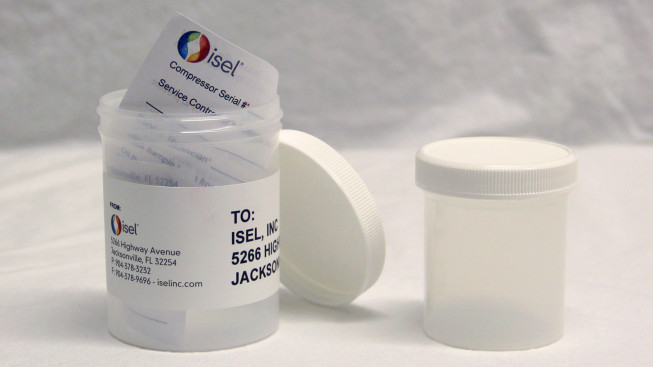
Oil analysis is a valuable tool for determining the condition of lubricating oil and the equipment it lubricates. It is best used as a trending process — not a one-time event. When collecting oil samples for routine oil analysis, where and how should you do it?
Even “Simple” Systems Can Present Oil Sampling Complications
On a piece of equipment without a forced lubrication system or oil filtration, usually a sample drawn from the oil sump is sufficient to monitor the health of bearings and gears as well as the contamination/degradation of the lubricant. But even with this “simple” type of system, knowing where and when the sample was obtained is crucial to analyzing the results. For example:
- Was it drawn from the very bottom of the oil reservoir?
- Was it drawn from the bottom after the machine had been shut down for 24 hours? If so, this would allow for the settlement of wear particles, thereby increasing particle counts, water contamination levels and so forth.
- Was the sample obtained from the middle of the reservoir but with a dirty universal sampling container? Contaminating multiple samples is a common error in oil sampling.
Location, Location, Location
To gauge the condition of a component, it is helpful to know the condition of the oil going into that particular component (bearing, gear, sealing surface) before any filtration occurs.
When taking a sample after the pump or oil filter, it is not always possible to determine where any particles would be originating from. They could originate after the pump. Is the pump causing wear metals, for example? Or they could originate after a filter. The oil should be clear of any large metal particles if the filter is performing as expected, but that would prevent any early trending of bearing, gear or other contact surface degradation.
Giving quality trending values to the life of the equipment is an important step toward the ultimate goal of keeping equipment up and running without catastrophic failure. To that end, in a complex system, samples will usually be taken at multiple sampling points to isolate particular components if a trend has been established.
For example, consider a two-compressor system with a common sump. If metal wear particles are detected in the sump oil sample, how do you know which compressor is the potential source of the metal? You would have to sample from the oil drains of each compressor leading to the common sump and so on to get down to a component level so that a repair can be determined for the damaged component — rather than overhauling the entire machine.
Knowing where and how a sample is obtained is valuable information required when analyzing a fluid sample. Checking before and after a filter will tell you if the filter is doing its job of removing the desired contamination — assuming full-flow filters are used. In a side-stream filter, which generally has a much smaller micron rating, sampling before and after the filter can help verify whether the desired contaminants being removed from the system.
Seek Expert Guidance
Proper sampling is critical for evaluating the condition of a lubricant and of the machine it is responsible for lubricating. With so many variables and potential complications, oil sampling sometimes may seem easier to get wrong than right. To make matters worse, improperly taken oil samples can often lead to misrepresentative test results and inappropriate recommendations.
Isel can help overcome these challenges. Isel offers expert oil analysis services for Isel-manufactured lubricants, and we also can advise you regarding appropriate sampling practices.
Relevant Entries in this Category that May Interest You:
Isel is Now Part of DuBois Chemicals!
In 2020, Isel joined the DuBois Chemicals team! DuBois/Isel is proud to continue the tradition of manufacturing refrigeration solutions specializing in...
Read MoreISEL to exhibit at Best Practices Compressed Air EXPO – 2021
Visit ISEL at the Best Practices Compressed Air EXPO which is held at the Renaissance Schaumburg Convention Center Hotel in...
Read MoreMAKE-A-WISH TURNS 40 AND ISEL SHOWS THEIR SUPPORT
April 2020 On April 29, 1980, the first wish was granted. A seven-year-old boy who yearned to be a police...
Read More
